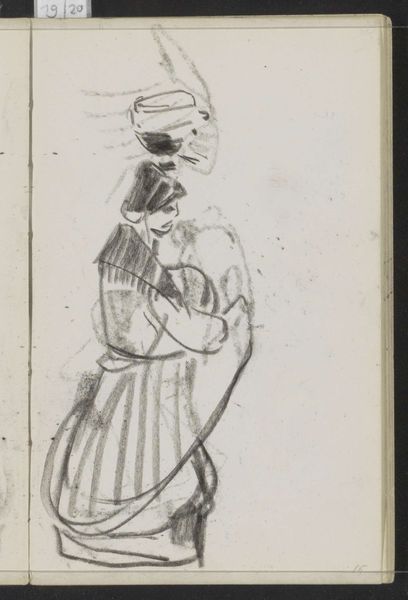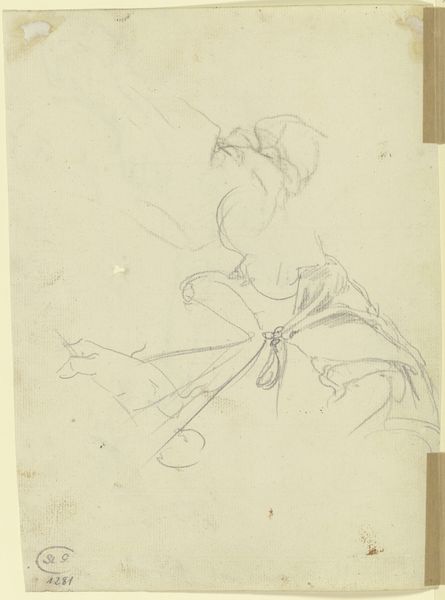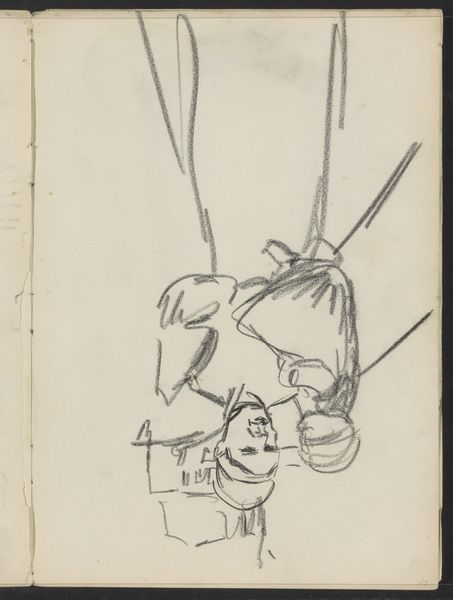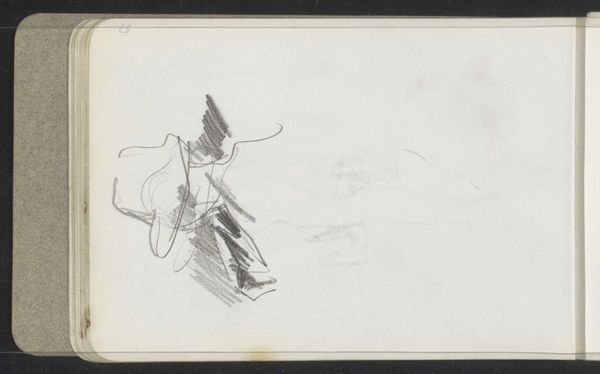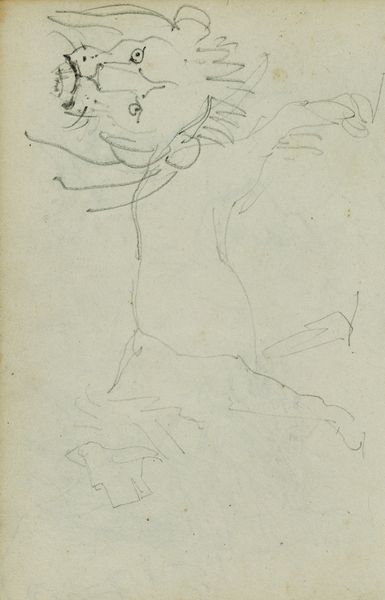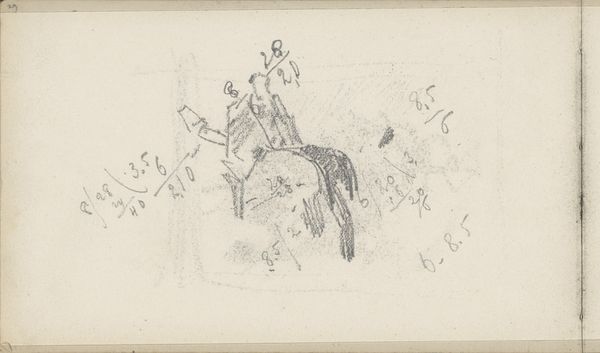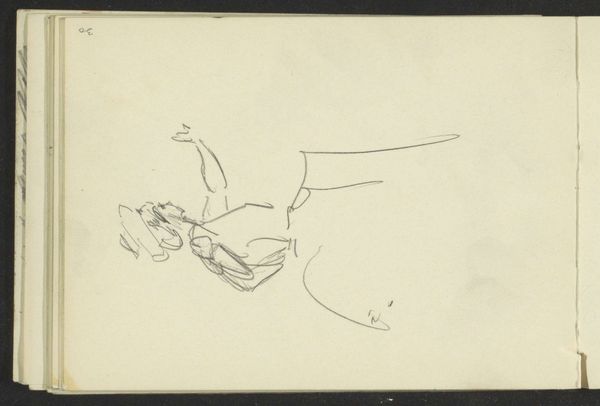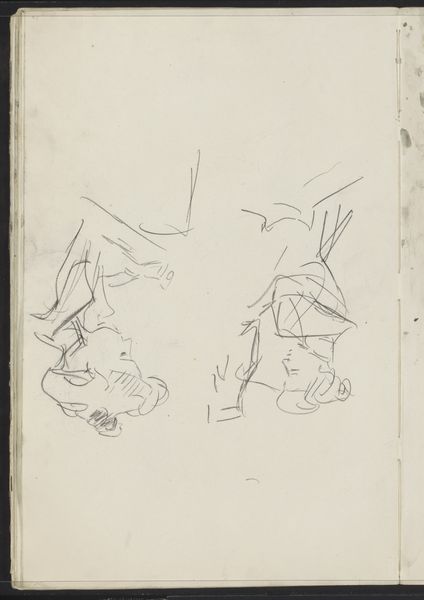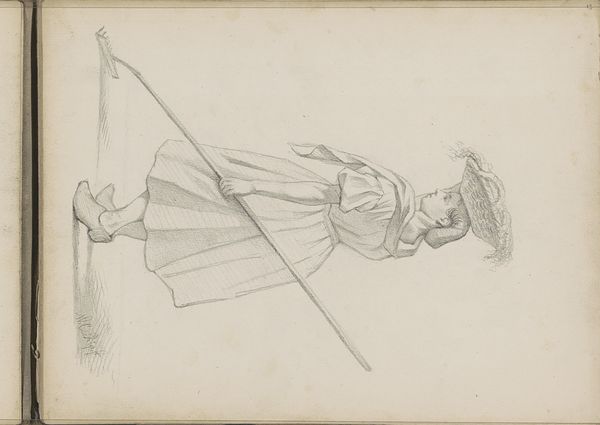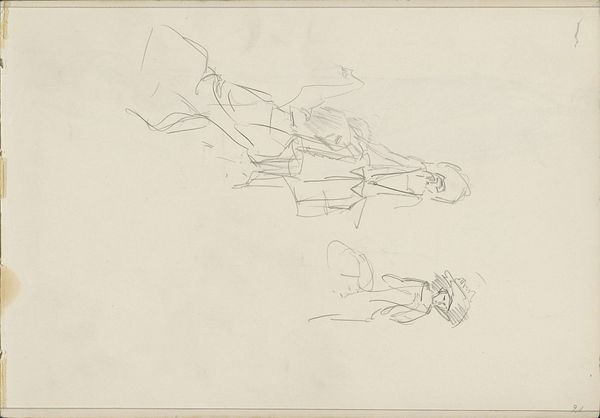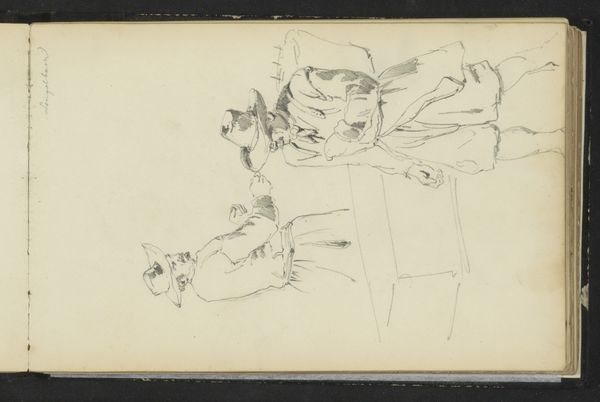
Copyright: Rijks Museum: Open Domain
Curator: Welcome. Before us is a drawing by Isaac Israels, dating somewhere between 1875 and 1934, entitled "Vrouw op een ezel"—"Woman on a Donkey." Editor: It possesses a vibrant, frenetic quality. The dynamism in the line work practically animates the figures, imbuing the image with a feeling of perpetual motion. Curator: Precisely. Observe the artist’s energetic application of ink upon paper, seemingly captured in swift, confident strokes. What might the image signify, culturally or emotionally, to contemporary viewers? Editor: Well, donkeys traditionally symbolize humility, service, perhaps even stubbornness. Placing a woman upon one might speak to societal expectations, or even to a quiet strength inherent in her character, though her face seems barely realized beyond childlike imagery. Is this meant as ironic commentary? Or simply a sketch of a traveler? Curator: It is fascinating to consider whether Israels intended commentary. The piece is so compositionally direct; a few strokes define the contours of the figures, foregoing detail for the suggestion of form and movement. Notice how the lack of definitive lines opens the artwork to different interpretations. The pen work, from my perspective, showcases a fascination with the potential of reduction, a pursuit of core essentials in portraying form. Editor: Perhaps the emotional weight comes from this tension between the ephemeral and the archetypal. Donkey-riding women appear in mythology and folk traditions throughout the world, each laden with particular meanings. It feels less a personal observation and more a shadow pulled from a deep, shared well. Curator: An insightful reading. Its lack of finish pushes our interpretative role. Note the suggestive rather than definitive rendition. Editor: Indeed. This raw aesthetic grants the work a persistent, almost unsettling psychological power, as if peering into the rudiments of primal narratives, somehow both innocent and unnerving. Curator: In its studied sparseness, we appreciate Israels’ remarkable control over the visual elements, despite an air of the impromptu, no? It speaks volumes about his engagement with the interplay between the controlled and uncontrolled. Editor: Agreed. It reveals much about the process of meaning-making, in that a small composition echoes through culture. What began as simple ink becomes an expansive dialogue about memory itself.
Comments
No comments
Be the first to comment and join the conversation on the ultimate creative platform.
